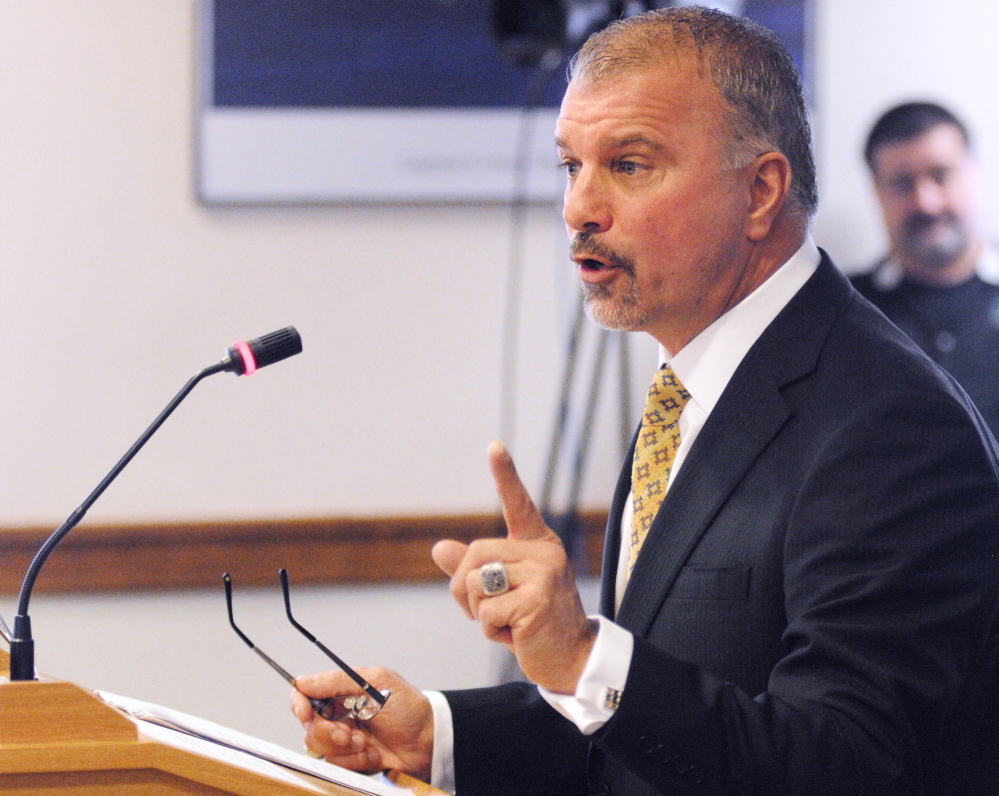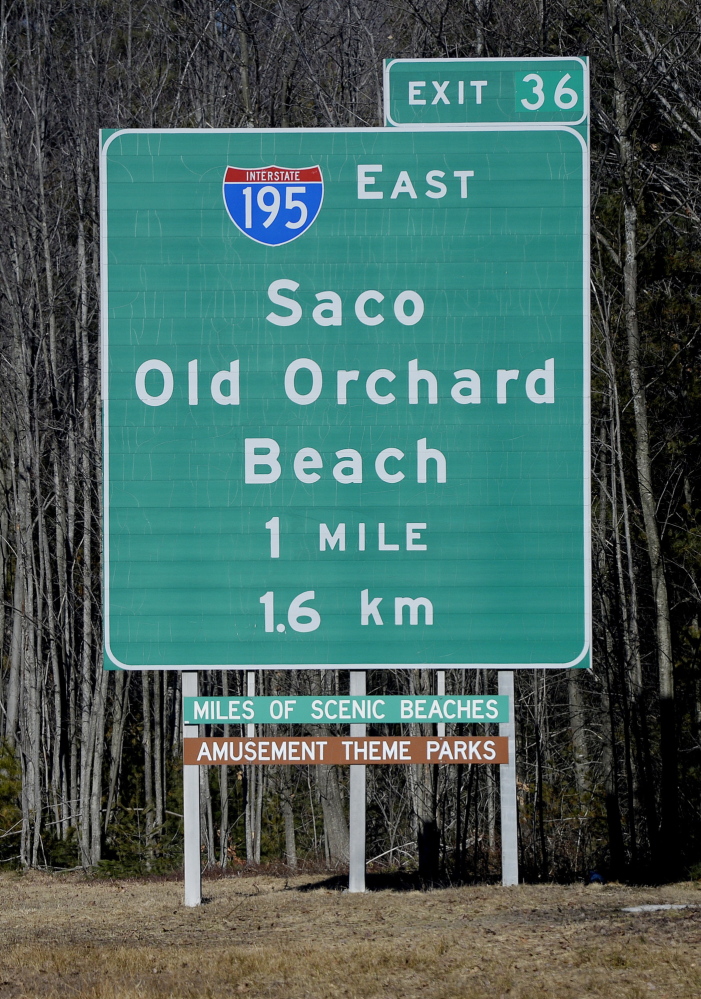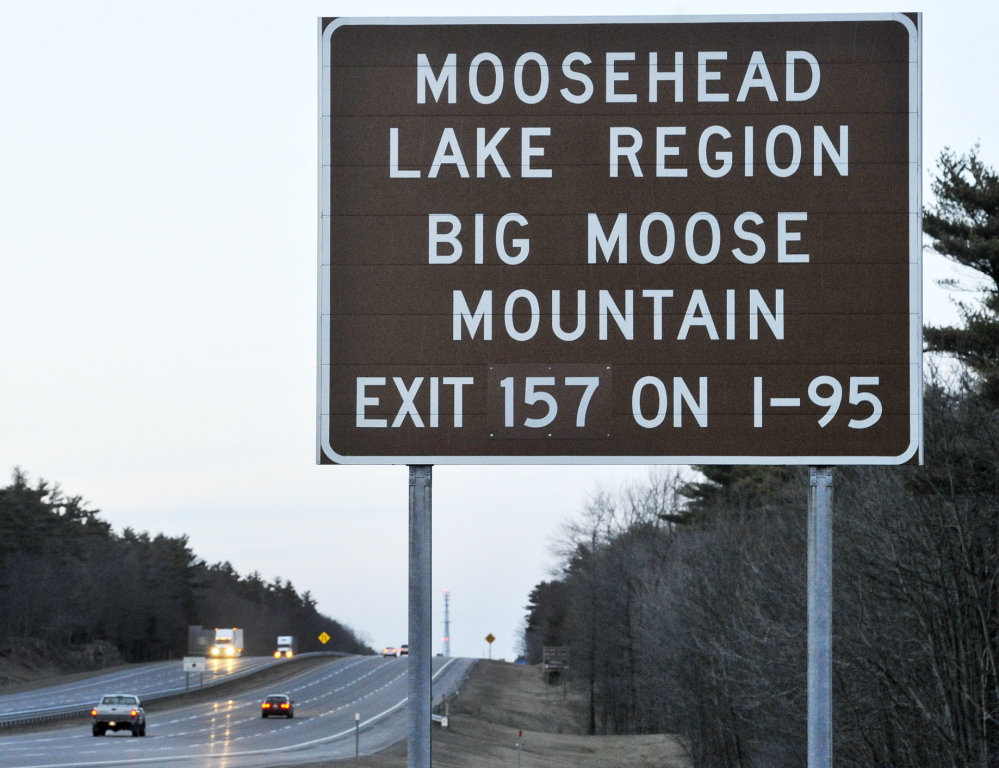AUGUSTA –– You can’t get there from here.
Some businesses and town officials fear that old Maine saying could turn out to be true if state lawmakers pass a bill to eliminate dozens of signs on the Maine Turnpike and interstate highways.
Business owners and representatives of communities from Arundel to Lubec condemned the measure Tuesday at a three-hour public hearing before the Legislature’s Transportation Committee, saying it would hurt tourism by making it harder for visitors to find rural attractions.
The bill, developed by the Maine Turnpike Authority and the state Department of Transportation, seeks to create standards for turnpike and interstate signs and bring Maine into compliance with federal standards that define which attractions merit signs. Officials say Maine could lose millions of dollars in federal funding if it doesn’t meet the standards.
Along the turnpike and interstate highways are three types of signs.
The green signs that mark upcoming exits would not be affected by the legislation. Also unaffected would be the blue “services” signs advertising businesses such as restaurants, gas stations and tourist attractions. Each business pays $1,500 a year, per sign, to have its logo displayed.
The bill concerns “supplemental guide signs,” which are brown with white lettering and give exit numbers for destinations that aren’t immediately off the highway interchanges. Those signs, like the green directional signs, are publicly funded.
The state’s proposal would alter 30 percent of the supplemental guide signs on the turnpike, Interstate 295 and Interstate 395, a 5-mile road between Bangor and Brewer.
A total of 68 of the 225 signs would be affected, including 26 that would be removed. Forty-two would either be moved closer to the places they point out or be removed but qualify for logo signs.
Peter Mills, executive director of the turnpike authority, and Deputy Transportation Commissioner Bruce Van Note were the only people who spoke in favor of the bill at Tuesday’s hearing.
Mills acknowledged concerns about losing signs, but said the state can’t put its federal highway funding in jeopardy. A letter from the Federal Highway Administration in March 2013 said signs are “very critical for the safe and efficient transportation of people and goods” and Maine must meet the federal standards.
The standards have been in effect for years, but Maine has erected signs over the years that do not adhere to them, Mills said. He said signs are supposed to provide direction to drivers clearly and effectively, and should not serve as advertisements for particular businesses, as the federal standards say.
“The federal government has said it’s about traffic, it’s about destinations,” Mills said. “We need policies that apply across the board and uniformly.”
Mills said Maine’s rural nature was taken into consideration when the bill, L.D. 1831, was developed.
Attractions like universities, national and state parks, and major recreational areas qualify for supplemental guide signs if they meet certain guidelines for numbers of visitors and distance from interchanges, the standards say. Many businesses and attractions that don’t qualify could instead buy logo space on the blue service signs, which typically are posted before exits to indicate what services and attractions are available there.
Some towns, including Arundel, Hallowell and Topsham, would lose signs directing drivers to them because they have populations of less than 10,000 and are not considered major attractions.
Some officials have gone to great lengths to get signs on the turnpike or interstates, including former South Portland City Manager Bernal Allen.
After the Maine Mall opened in 1971, the state refused to put a sign for the mall on the turnpike. So Allen, who became the mall’s first general manager, got the city to rename Payne Road to Maine Mall Road in 1975, and the Maine Mall Road exit sign served the purpose.
Sen. David Burns, a Republican who represents towns in Washington County, said tourism is critical for the county’s economy, and removing signs for places like Quoddy Head State Park and Roosevelt Campobello International Park because they’re too far from the attractions would hurt the area.
“We are not necessarily ‘on the way’ and we depend on signage to attract these visitors,” he said.
Kevin Cormier, co-owner and vice president of Funtown Splashtown USA in Saco, said a brown supplemental guide sign near Exit 36 would be removed under the bill, while similar signs for ski resorts would not. The amusement park pays $3,000 a year to appear on two blue “services” signs.
“While it may be that Saco and Old Orchard Beach’s amusement theme parks lose our 6-inch-tall lettered sign, why are ski resorts that are also visited by hundreds of thousands of people from both in-state and out of state getting much larger signs for free? We are all businesses selling fun recreational opportunities,” Cormier said.
Under the proposed legislation, ski areas with a minimum vertical drop of 1,000 feet and 40 or more maintained trails would qualify for supplemental signs.
Gregory Sweetser, executive director of the Ski Maine Association, said he opposes the bill because removing signs for smaller ski areas – like Lost Valley in Auburn – would hurt an industry that plays an important role in the state’s rural economy.
Others expressed concerns about specific signs that would be taken down. A sign for Topsham would be removed, prompting town officials to call the proposed regulations too narrow because they wouldn’t allow enough places to have signs.
Todd Shea, town manager of Arundel, said it would be unfair to remove a sign for Arundel, while pointing out that more than five miles of the turnpike go through the town.
Hallowell officials echoed his concern, saying it is essential for the town’s small businesses that visitors find their way downtown.
Sen. Linda Valentino, D-Saco, a member of the Transportation Committee, said it may make sense to enact uniform rules, and suggested removing nonconforming signs as they deteriorate, rather than spend money to take them down.
The Transportation Committee will hold a work session Wednesday afternoon to consider whether to recommend the bill.
Gillian Graham can be contacted at 791-6315 or at:
ggraham@pressherald.com
This story was updated at 7:50 a.m. on Wednesday, April 2, 2014 to correct the name of the deputy transportation commissioner.
Send questions/comments to the editors.







Comments are no longer available on this story